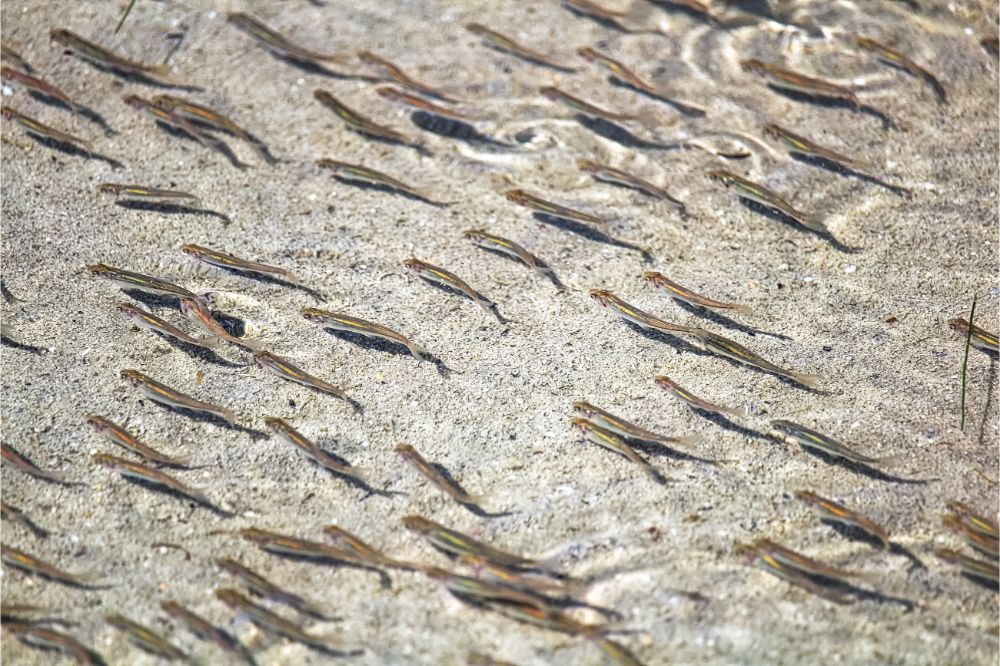
How To Catch Grunion during a Grunion Run
This article will provide an overview of the steps needed to catch grunion during a grunion run. It will explain what grunion runs are, when and where to catch grunion, what gear is needed, how to catch them, and how to preserve and cook them.
What is a Grunion Run?
A ‘Grunion Run’ is a phenomenon where grunion fish come ashore and lay eggs in the sand. This usually takes place during the full moon and new moon cycles in the months of March, April, May, June, July, August, and September. The grunion fish come ashore in huge numbers to lay their eggs and then depart again. The eggs can take up to two weeks to hatch, so you’ll have plenty of time to catch them!
When and Where to Catch Grunion
Once you know what a grunion is and why they come ashore to spawn, you’ll want to know when and where to catch them. In California, grunion runs occur from March to August, with the peak season being April through June. The grunion usually come ashore during high tides of a full or new moon, although the number of runs each month can vary depending on the time of year. Many of the best spots to catch grunion are along the southern California coast, from San Diego to Santa Barbara. However, grunion have also been known to run in the northern part of the state, with runs occasionally happening in Santa Cruz and Fort Bragg.
In addition to checking the moon phases, you should also research the best beach locations. Some beaches are better for grunion runs than others, and certain areas tend to be more productive than others. You can also find out which beaches are open to the public, as some beaches close during grunion runs. The California Department of Fish and Wildlife also has a list of beaches where grunion runs are known to occur.
Gearing Up
Gearing up for a grunion run is fairly simple and the most important piece of equipment is a flashlight. With the light, you can easily spot the fish and move quickly to grab them. You should also bring a bucket and a net to help you scoop them up. A pair of rubber gloves can help to protect your hands when you handle the fish, and a fishing license is a legal requirement. Lastly, don’t forget to bring a good attitude and some patience, as grunion runs can last a while.
Catching Grunion
Catching grunion is actually quite easy. All you need to do is wait for them to come up on the shore and then scoop them up with your hands. It’s important to move quickly, as grunion will make their way back into the ocean shortly after appearing. If you manage to scoop them up, make sure you keep them in a container with water, so they can stay wet and don’t dry out. It’s also important to remember not to take more than your legal limit. While you are waiting for the grunion to appear, you can try to find them by looking for areas of the shoreline that are disturbed by their presence. This can be done by looking for small sand mounds and tail marks in the sand. When you spot them, you can start scooping them up. Make sure you move quickly, as grunion will only stay in shallow water for a few minutes before swimming out to sea.
Preserving Your Catch
Once you’ve caught your grunion, you’ll want to store them properly. Grunion can be frozen for up to several months but it’s best to use them within a few days of catching them. To freeze grunion, place them in a zip-lock bag and fill it with some salt water. This will help to preserve them. Alternatively, you can also preserve them in brine. To do this, mix a quarter cup of salt with every gallon of cold water. Place the grunion in the brine and store them in the refrigerator for up to two weeks. Finally, grunion can also be smoked. To do this, place the grunion on a smoker rack and smoke them at a low temperature for several hours. This will give them a delicious smoky flavor.
Cooking Grunion
Once you’ve got your grunion, you can take them home and cook them up. Grunion are tricky to clean and prepare, so to get the best results, you’ll want to start by gutting them and then removing the skin. You’ll also want to remove the head, as it can be difficult to chew through. Grunion can then be cooked in a variety of different ways, such as pan-fried with butter and garlic, boiled in fish stock, or even added to a soup or stew. No matter how you decide to prepare them, grunion are sure to make a tasty meal.
Conclusion
Grunion runs are a unique experience for fishers. With a little know-how, you can quickly be catching grunion! Remember to come prepared with the right gear and the patience to wait for the grunion to appear. Once you have your grunion, you will want to preserve and store it properly in ice or salt. When ready, grunion can be cooked and enjoyed. Good luck and happy fishing!
